Stephanie M.
I'm a content writer and novelist who loves books, writing, theater, and my cat. I have published two novels and traveled to London and Paris.
Columnist III
- Plebian Penman
- Common Writer
- Aristocratic Author
- Noble Scribe
- Lurker
- Pssst
- Hand Raiser
- Vocal
- Outspoken
- Extrovert
- Center of Attention
- Forms a Crowd
- Sharp-Eyed Citizen
- Town Watch
- Detective Deskman
- Penman Patrol
- Forensic Fiend
- Motivational Columnist
- Motherboard
- Composition
- Literary Art
- Referencer
- Actor
- Successful Pilot
- Animator
- Animaniac
- Well Read
- Chaptered Mind
- Art Collector
- Article of the Month
- ?
- Articles
40 - Featured
36 - Comments
711
- Ext. Comments
338 - Processed
191 - Revisions
188
- Topics
81 - Topics Taken
5 - Notes
248
- Topics Proc.
81 - Topics Rev.
19
- Points
13316 - Rank
4 - Score
9159
Latest Articles
Latest Topics
Twelve Days of Christmas: An AnalysisThe Twelve Days of Christmas is one of the best known, and arguably more exhausting and annoying, Christmas songs in existence. It's so complex and has been around for so long, one might expect it to have vanished from the carol canon decades ago. However, the carol lives on, as do the stories and legends behind it, and the projects it has inspired. Origin stories float around social media every year. Perhaps the most popular claims that the carol was a way for Catholics in King James I's era to express their faith without fear of persecution (the partridge is Jesus Christ, the three French hens are faith, hope, and charity, and so on). Another origin story claims every gift in the carol is a different bird, not just the gifts directly associated with birds (e.g., "five golden rings" refers to ring-necked pheasants). Along with this, touching or funny riffs on the carol are found in almost every fandom and subculture (Harry Potter, Redneck 12 Days, 12 Days based around political satire, and more). Hallmark's expansive list of holiday movies includes no less than two based on the conceit of giving 12 meaningful gifts. Even some of today's more orthodox church denominations (Catholic, Eastern Orthodox, and others), still treat Christmas as a 12-day affair, ending on the Day of Epiphany. Examine how and why the 12 Days of Christmas, song and concept, are so ingrained in our culture even if not everyone celebrates the holiday as such. Pick a few origin stories or 12 Days-inspired projects to analyze. What does this carol and concept mean for us? What is it about the concept that has staying power, even if some people dislike the song? Are some inspired projects better at capturing the spirit of 12 Days than others? What might a literal or figurative "12 Days" look like for secularized culture, and would it make the holidays better or worse? Both? Discuss.
|
The Cultural Impact of Elf on the ShelfIn 2005, Carol Abersold and her daughter Chanda Bell dreamed up a new Christmas tradition. Parents could purchase one of Santa's elves, a cute little creature sent to "scout" for Santa and report whether the kids in a certain home had been good. The elf would stay with their chosen family from December 1-25, getting up to creative antics while the kids were asleep every night. The combination elf doll and book were an instant smash hit with their target demographic. In almost 20 years since inception, the original white, blue-eyed male elf has received female counterparts, as well as Black and Latino/a counterparts, male and female. Parents of disabled children have bought or handmade accessories like wheelchairs or braces for their dolls. The Elf on the Shelf has its own theme song and has spawned a made-for-TV movie, as well as a 2023 elf-themed baking competition on Food Network. However, not everyone wants this elf on their shelf. Every year, parents flock to social media to panic–"It's almost December 1 and I can't find the elf/I need an elf!" They commiserate with fellow parents and guardians–"I hate this [darn] elf!" Parents, teachers, and child development experts have excoriated the elf as a "Christmas spy," a tool that encourages extreme behaviorist thinking and doesn't contribute to concepts of grace, making mistakes and learning from them, or doing well without doing perfectly. In a season where kids are already excited, anxious, and overstimulated, the elf feels like an enemy. Plus, many parents find it "just plain creepy." Discuss the pros, cons, and cultural impact of the Elf on the Shelf, as well as any alternatives you know (e.g., Kindness Elves, elves who use their time to make the journey to Bethlehem, elves who celebrate Hanukkah or Diwali). Why do you think culture embraced or rejected the Elf on the Shelf? In what capacity if any was it needed? Do alternatives "work," or do we need better alternatives, if any? Will the phenomenon ever leave us? Choose a couple of these or other questions upon which to expound. |
Published | Why Writers Love WhumpWithin the fiction writing community and especially on social media outlets like Tumblr, there is a particular type of writing that draws a subset of writers. This writing type is called "whump." Broadly defined, "whump" happens when one character gets hurt, physically, emotionally, or otherwise, and must receive care from another character, or conversely, endure the trauma alone. Whump can take many forms and be as innocent or graphic as the writer wants, although most writers will post trigger or content warnings if they intend to go into certain details. Graphic or not though, many writers confine their enjoyment to whump communities for fear of being misjudged as sadists, masochists, or otherwise unstable. Others write whump to the exclusion of other types or scenes, which may raise questions about their growth in the craft of writing. Examine the many reasons why fiction writers love whump. Are they all looking for catharsis for their own trauma? Are some of them caretakers who enjoy seeing characters rescued and nursed to health? Why do you think these writers get judged for liking and creating whump content, whereas a whump reader is less likely to be judged for reading a violent or horror novel? Are there some forms of whump that take the concept too far? And perhaps most importantly, what does this type of writing offer to the fiction community, that no other writing does?
|
How Will the Current Culture Affect Classic Novels?Most of us grew up with some form of the classic novel. Whether we read abridged, illustrated versions for kids, encountered them in school, or watched TV or movie versions (e.g., Wishbone, Disney adaptations), most of us know at least some of the traditional "classics" of the Western canon. These include but are not limited to works by Dickens, Steinbeck, Morrison, Lee, Shakespeare, Austen, and Wells. As our culture becomes more aware of concepts like marginalized experience and cultural appropriation though, our relationships with classic literature may change. We now critique certain examples of classics because of what they imply about non-Western, non-white cultures, or what they leave out. We critique them based on the roles women do or don't play, or how characters of color are treated, or whether characters coded LGBT are sympathetic. As a disabled woman, I find myself being harsher with books like Of Mice and Men or The Color Purple because of how they treat members of my groups. How does this heightened critique and awareness mean we should treat the classics? That is, can we still learn valuable things from these books even if they are cringe-worthy in their rhetoric or character portrayals? How can we engage with these books, without spending all our time on the problematic parts? Some of these classics have been retold because of heightened critique; was this a good or bad idea? And, are these critiques even valid, or should we simply say, "This was written in another time and we should simply accept that?" Discuss.
|
The Cancelling of Sapphic and Women's-Centered SeriesSocial media is buzzing about a disturbing, but not necessarily new trend–the cancelling of sapphic television series, especially on streaming services like Netflix. "Sapphic" refers to content "of or relating to sexual attraction or interplay between women," and disgruntled and confused viewers aren't seeing enough of it. They point out the short-lived nature of once-popular series such as The Baby-Sitters' Club (2020) and Paper Girls, to name only two. Even more disturbingly, some series that might not be called sapphic, but are certainly women-centered, have been cancelled, were panned by critics, or have disappeared into long hiatuses. (See Gilmore Girls: A Year in the Life, Chilling Adventures of Sabrina, and Anne With an E for examples). Discuss why these series, especially on Netflix, might have been disproportionately represented on the chopping block. Do the "powers that be" see women-centered content, particularly the sapphic, as a threat, and if yes, why? Do cancellations happen just because of the nature of Netflix–shorter seasons and encouragement of "bingeing"–but if yes, why is male-centered content not cancelled as well? Do female viewers want different types of content, and if yes, what do they want? What would it take to bring female-centered shows, sapphic and otherwise, front and center on streaming services again?
|
The Impact of Blue and BlueyA popular meme showing Blue of Blue's Clues fame and Bluey of the eponymous Australian cartoon reads, "Every so often, a blue dog appears to guide a new generation." Tongue-in-cheek humor aside, one cannot deny the popularity and relevance of Blue and Bluey for millennials and Gen Z in particular. Examine and analyze these two blue canines, their compatriots, and their shows. Compare and contrast them. What makes them both so engaging, yet unique to the generations at which they were originally aimed? What makes both so special for both the children and parents who watch them now? Why have both shows succeeded in netting older "periphery demographics" (e.g., older elementary students) where other shows have not? Or conversely, if one show or the other drove, or is driving, other older viewers up the proverbial wall, why is that? |
The Rise of the Split Time NovelCurrently, split time novels are some of the most popular in the fiction market. These novels usually pair a historical protagonist with a contemporary one, connecting their stories across time through similar themes and motifs or sometimes a significant object or event. For instance, one protagonist might have lived through World War I or II, and the other might be that protagonist's grandchild or great-grandchild looking for answers regarding what happened to that grandparent during the war years, but the other family members never talk about. Despite the popularity of these stories, they're arguably becoming formulaic. Some time periods and plotlines are becoming overdone. For instance, it is no longer uncommon for World War II to be the featured historical period. A contemporary protagonist is often drawn to care about the past only if he or she "gets something out of it," such as a promotion at work or a "last chance" to connect with a grandparent dealing with dementia (the question becomes, why didn't the grandchild ever attempt to connect before)? Discuss some of the more popular split time novels and what sets them apart from their myriad counterparts. Discuss what historical time periods aren't being taken advantage of right now that could be, or what plotlines contemporary characters could experience. For instance, could time travel be a possibility? Body or identity switches? Historical and future timelines?
|
The Arts' Love of All Things WinterDisney's Frozen burst into our theaters and onto our small screens in 2013, and no one has "let it go" since. The film became a franchise, with rumors of a third installment coming in 2023 or later. But Frozen is not the only wintry tale media consumers love. "Winter tales" can be found across mediums, from TV series like Game of Thrones whose tagline is "Winter is Coming," to a plethora of books with titles like The Snow Child, WinterFrost, and Girls Made of Snow and Glass. Many of today's super-powered or "chosen one" protagonists also have winter-related powers; Queen Elsa might be the most obvious, but there is also Jack Frost from Rise of the Guardians, as well as Freya from Snow White and the Huntsman. Winter permeates the arts, no matter the season. Yet what is it about this season, out of four, that captures the imagination of writers, filmmakers, and other artists? Analyze a few prevalent winter tales across mediums, looking for commonalities among characters, character arcs, plot threads, powers, and more. Could the other three seasons garner this kind of attention, and if yes, what would it take to make that happen? Are artists, authors, and others who craft "winter tales" trying to make a statement about their art, themselves, or humanity through winter? If yes, what is it? Discuss.
|
Latest Comments
| Analyzing Rodgers and Hammerstein's Female Leads | |
It definitely does. And I wanted to go into the fact that, the kangaroo court and sham trial places Laurey in a bad position because it means she essentially married a murderer (manslaughter, but, semantics). The reason I didn’t is, that would’ve gotten the article off track (I would’ve had to go deeper into Curley’s flaws–why he thinks defending a woman has to = manslaughter, what was or wasn’t acceptable for men back then, why his actions were acceptable when Jud’s were not). And while I could’ve made that work…it just wasn’t the direction the piece as a whole ended up going. That said, I *could* write a companion piece arguing that all four of the leading men here are also no good for their wives/lovers (as was said in Carousel, “ain’t nothing so bad for a woman as a man who thinks he’s good.”) But I don’t know…does that run the risk of making the women look stupid? Or arguably worse, crossing into misandry? Because I have no problem with flawed characters, but I do want to speak to heroism and true heroines when they are there. | Analyzing Rodgers and Hammerstein's Female Leads |
I’m glad to hear it. That wasn’t my conscious goal, but I like to analyze different perspectives and examine angles not everyone sees, so I’m thrilled when others see them, too. | Analyzing Rodgers and Hammerstein's Female Leads |
I see what you’re saying. Julie’s a hard character to analyze and an even harder one to play. I tried to clarify, but maybe I didn’t get the message across. I don’t think she was naive enough to see abuse as love, at least toward the end. In the beginning, yeah, because she’s like Laurey–she thinks she’s more mature than she really is. But as she settles into the reality of her marriage, her choices, it’s not so much that she’s looking at Billy and saying, “This is love.” I think it’s more like, “I can’t get out of this for whatever reason, it sucks, I can’t change him, and that sucks. But I can make as many small choices as I can for the situation. I can tap into strength and love for *me,* even if Billy cannot or will not accept it. I can focus on the baby, I can hold out a thin hope that Billy might be a good dad because there’s still some potential there.” For a similar arc, see Jane Seymour in Six: The Musical. It would be easy, and not entirely correct, to say, “She just ‘takes it.'” But she also has an “unbreakable heart of stone.” | Analyzing Rodgers and Hammerstein's Female Leads |
🙂 I like that idea. | Analyzing Rodgers and Hammerstein's Female Leads |
I have some nostalgia for Oklahoma, too. It’s one of the first productions I saw from our local high school, which had an incredible theater program back then (I was 10 at the time, and my mom took me to cheer me up because I’d had a rough start to the summer after fifth grade). I was of course enthralled, and I remember thinking, “I want to do that when I get old enough.” When the choir came to perform for my eighth grade class a few years later, this was only cemented. And yes, I did get into that program. I never got any big parts, but just being there was an experience. | Analyzing Rodgers and Hammerstein's Female Leads |
Agreed, and yeah, Hollywood and reality almost never, if ever, mix. Sometimes that’s okay and sometimes, it just makes you cringe. I don’t think R&H needs to be “woke,” but the fact that there is absolutely *no* history in Oklahoma–I’m like, really? Then again, I did grow up the daughter of a history buff, so that does influence my reaction. | Analyzing Rodgers and Hammerstein's Female Leads |
They did! They’re an underrated power couple for sure. | Analyzing Rodgers and Hammerstein's Female Leads |
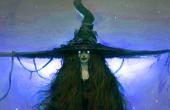
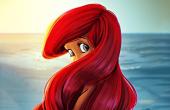
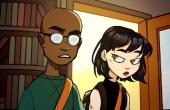

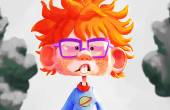
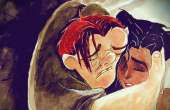
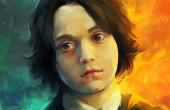

They are, and that can work great. I think the key is playing them with respect to their original interpretations, while giving the freedom to be fully realized women. (As we very recently saw with Snow White, too much modernization is a formula for utter disaster).